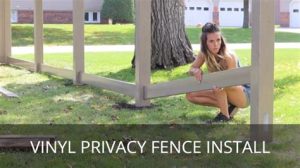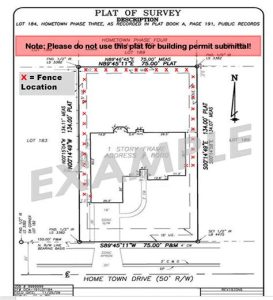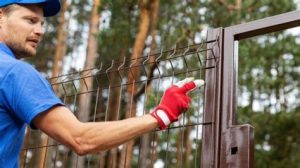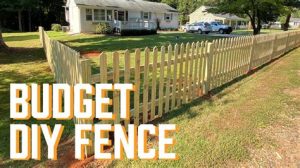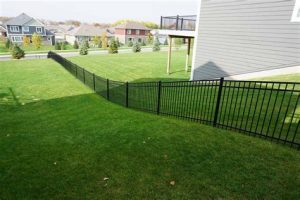Discover common issues in rod iron fence installation and learn how to troubleshoot alignment, post placement, and rust problems for a flawless finish.Installing a rod iron fence can be a rewarding project, enhancing both the security and aesthetic appeal of your property. However, like any DIY endeavor, issues can arise that may hinder the installation process. From uneven fence alignment to problems with post placement, being prepared to troubleshoot these common problems is essential for achieving the desired results. In this blog post, we will explore the most frequently encountered challenges during rod iron fence installation and provide practical solutions to overcome them. Whether you’re a seasoned DIYer or a first-time installer, our guide will help you identify the root causes of installation issues and offer tips for fixing rust or corrosion, ensuring your rod iron fence stands strong and looks great for years to come. Let’s dive in!
Common problems during rod iron fence installation
Installing a rod iron fence can enhance the aesthetic appeal of your property and provide security. However, several common problems can arise during the installation process, potentially leading to costly delays and rework. Understanding these issues before they occur can save you both time and frustration.
One of the most prevalent issues is misalignment of the fence panels. This can happen for several reasons, including uneven ground or improper measurements. When panels are not aligned correctly, it not only looks unprofessional but can also compromise the effectiveness of the fence.
Another common issue is incorrect fence post placement. If the posts are not set in the right locations or at the proper depths, this can lead to instability. In some cases, a post that isn’t adequately buried can tilt, causing the entire fence to sag or lean. Additionally, rust or corrosion can be a problem if the materials are not adequately treated or if there’s exposure to moisture during installation.
By being aware of these common problems upfront, you can take the necessary precautions to address and mitigate them, ensuring a smoother installation with fewer issues down the line.
Identifying the cause of installation issues
When it comes to installing a rod iron fence, challenges can arise at any stage of the process. Identifying the root cause of these installation issues is essential for achieving a successful and lasting installation. Common problems can range from improper measurements to inadequate tools. Understanding these issues will empower you to advance through the installation process with confidence.
One prevalent cause of installation issues may stem from poor planning. Before beginning your installation, it is crucial to determine the exact dimensions of your yard and the layout of the fence. Use a measuring tape and stake out your proposed fence line to ensure accuracy. If the fence is not aligned correctly, it can lead to uneven lines and misalignment of the fence posts.
Moreover, environmental factors can impact the installation process. For example, working in wet or unstable soil conditions may contribute to shifting or leaning of the fence posts after installation. It’s vital to check the weather conditions and the state of the ground before setting up your fence.
Troubleshooting uneven fence alignment
When installing a rod iron fence, one of the most common issues that homeowners face is uneven fence alignment. This problem can detract from the aesthetic appeal of your property and may compromise the functionality of your fence. Here are some steps you can take to troubleshoot and correct any alignment issues that arise during installation.
First, begin by checking the fence posts for levelness. Use a level tool to ensure that each post is perfectly vertical. If any of the posts are leaning, adjust them by adding or removing soil at the base until they stand straight. It’s crucial to make these adjustments while the concrete or soil is still malleable, as tightening after it has set can lead to damage or further misalignment.
Another common cause of uneven alignment can stem from improper measurements. To prevent this, always double-check the spacing between posts before installation. Use a measuring tape to ensure that the distance is consistent and falls within the specifications of the fence design. If you notice discrepancies in measurements, make the necessary adjustments before securing the posts in place.
| Common Causes | Solutions |
|---|---|
| Post Levelness | Adjust soil or concrete until the post is vertical |
| Improper Measurements | Recheck distances before installation |
| Ground Slope | Ensure a gradual slope or reinforce with braces |
Finally, if your fence runs along a slope, consider employing grade adjustments. This may include leveling some areas to maintain consistent height or creating steps if the slope is significant. Visually inspect the fence alignment frequently during the installation process to catch any issues early on.
Resolving issues with fence post placement
Proper fence post placement is crucial for the stability and longevity of your rod iron fence. Misalignment or incorrect spacing can lead to a host of problems, including an unstable structure and an unappealing appearance. To ensure that your fence posts are perfectly positioned, follow these essential troubleshooting steps.
First, check the spacing of your posts. It’s recommended to place them at intervals of 6 to 8 feet apart. If your measurements are inconsistent, it may lead to sagging or gaps in the fence. Utilize a measuring tape to confirm that each post is placed at the appropriate distance from its neighboring posts. Additionally, consider using a string line to visualize the line of your fence effectively.
Another common issue arises from improper depth when setting your posts. Posts should be buried at least one-third of their total length for stability. If they’re not deep enough, they may lean or tip over time. To resolve this, you can remove the posts and dig deeper holes or use a post-setting concrete that expands and secures the posts in place. Remember to check for levelness after adjusting the depth to ensure a straight and uniform fence line.
Fixing rust or corrosion during installation
When installing a rod iron fence, encountering rust or corrosion can be a significant setback. It’s essential to understand that these issues not only affect the aesthetics of your fence but can also compromise its structural integrity. Here, we’ll explore practical steps to effectively address rust and corrosion during the installation process.
First and foremost, if you notice rust on your materials, it’s crucial to assess the extent of the damage. For minor corrosion, you can often treat the affected areas. Using a wire brush, scrub off any rust until you reach the bare metal. Following that, apply a rust-inhibiting primer to safeguard against future rust formation. It’s best to conduct this maintenance in dry conditions to ensure proper adherence of the primer.
For more severe corrosion, where metal loss is significant, you may need to replace the affected fence sections entirely. It’s also wise to consider the long-term solutions, such as investing in corrosion-resistant finishes or coatings that will protect your iron fence from the elements.
Frequently Asked Questions
What are some common problems faced during rod iron fence installation?
Common problems include incorrect measurements, alignment issues, inadequate post installation, and difficulties with connecting panels.
How can I ensure accurate measurements for my rod iron fence?
To ensure accurate measurements, use a measuring tape, double-check your dimensions, and mark the layout on the ground before cutting or assembling components.
What tools do I need for installing a rod iron fence?
Essential tools include a post hole digger, level, measuring tape, drill, concrete mix, and safety equipment like gloves and goggles.
How can I fix alignment issues while installing the fence?
To fix alignment issues, use a string line to guide the installation and adjust the posts accordingly to ensure they are straight and evenly spaced.
What should I do if the fence panels don’t fit properly?
If the panels don’t fit, check for any misalignments and ensure that the posts are plumb and spaced correctly. You may need to adjust or trim the panels as necessary.
How can I prevent rust and damage to my rod iron fence?
To prevent rust, apply a protective coating or paint specifically designed for metal surfaces and perform regular maintenance checks for any signs of wear or damage.
What are some tips for securing the fence posts?
To secure the fence posts, make sure to use concrete for stability, ensure they are placed at a depth of at least 1/3 of their height, and allow adequate curing time before attaching panels.
